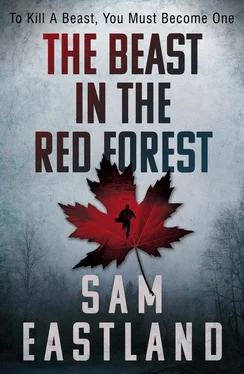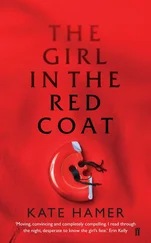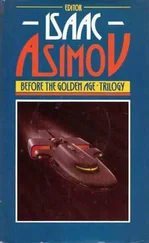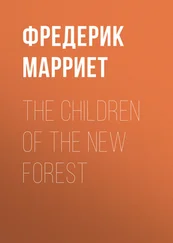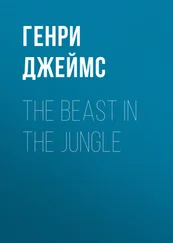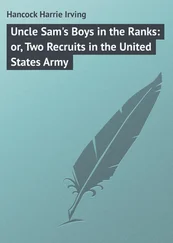Sam Eastland - The Beast in the Red Forest
Здесь есть возможность читать онлайн «Sam Eastland - The Beast in the Red Forest» весь текст электронной книги совершенно бесплатно (целиком полную версию без сокращений). В некоторых случаях можно слушать аудио, скачать через торрент в формате fb2 и присутствует краткое содержание. Год выпуска: 2013, ISBN: 2013, Издательство: Faber & Faber, Жанр: Исторический детектив, на английском языке. Описание произведения, (предисловие) а так же отзывы посетителей доступны на портале библиотеки ЛибКат.
- Название:The Beast in the Red Forest
- Автор:
- Издательство:Faber & Faber
- Жанр:
- Год:2013
- ISBN:9780571281466
- Рейтинг книги:4 / 5. Голосов: 1
-
Избранное:Добавить в избранное
- Отзывы:
-
Ваша оценка:
- 80
- 1
- 2
- 3
- 4
- 5
The Beast in the Red Forest: краткое содержание, описание и аннотация
Предлагаем к чтению аннотацию, описание, краткое содержание или предисловие (зависит от того, что написал сам автор книги «The Beast in the Red Forest»). Если вы не нашли необходимую информацию о книге — напишите в комментариях, мы постараемся отыскать её.
The Beast in the Red Forest — читать онлайн бесплатно полную книгу (весь текст) целиком
Ниже представлен текст книги, разбитый по страницам. Система сохранения места последней прочитанной страницы, позволяет с удобством читать онлайн бесплатно книгу «The Beast in the Red Forest», без необходимости каждый раз заново искать на чём Вы остановились. Поставьте закладку, и сможете в любой момент перейти на страницу, на которой закончили чтение.
Интервал:
Закладка:
Sometimes the reward was hardly worth the effort, but on rare occasions when the lake yielded more fish than the partisans could eat, the extras would be dried over a smouldering birchwood fire, the two halves of their bodies split like wings, and packed away in a storehouse he had built, raised above the ground on stilts to keep away the mice in wintertime.
Stray leaves, dry and curled, blew out into the lake. There, warmed by the sun, they melted their perfect forms into the ice, as if to remind him that spring would come again, in those times when it seemed as if winter would never end.
It was out of this wilderness, on the coldest day he’d ever known, with sunlight blinding off the snow and a fierce blue sky, the colour of a Bunsen burner flame, that a man appeared who would change Pekkala’s life forever.
He had been gathering the fish he’d caught that day — one speckle-backed trout and three perch — when he glimpsed a figure in the distance, heading directly towards him.
Pekkala did not run, or reach for the gun in his coat. There was something about the forlornness of this creature which made him more curious than afraid.
Silhouetted against the blinding snow, the figure seemed to change its shape, separating from itself and merging together again, like a drop of dirty oil in water.
Only when the man was almost upon him could Pekkala clearly distinguish the tall, dishevelled man, clothed in a tattered coat, whose torn hem dragged through the snow. Rags bound his feet instead of shoes. He carried no weapon, or any equipment at all. Covering his face was a sheet of white birch bark which had slits cut into it — a primitive but effective measure against the glare of snow which would otherwise have blinded him. With the scarf about his face and eyes hidden behind this paper scroll, his human shape seemed almost accidental.
For a moment, the man stood in front of Pekkala. Then he tore away his mask, revealing a face so creased with dirt and worry that it seemed no more alive than the bark which had concealed it. He dropped to his knees, snatched up a perch and, ignoring dorsal spines which punctured his fingertips like a fan of hypodermic needles, he tore into the meat.
When nothing remained in his hands but a fragment of the tail, the man finally looked up at Pekkala. ‘The last man I expected to find out here,’ he said, ‘was the Emerald Eye himself.’
‘How do you know me?’ asked Pekkala.
The man offered no words of explanation. Instead, he simply removed his cap, grasping it from behind and tilting it forward off his head in the manner of the old Tsarist soldiers, and it was in this movement that Pekkala finally recognised the man, whom he had last seen in a clearing on the Polish border, just weeks before the outbreak of the war. His name was Maximov. A cavalry officer before the Revolution, Maximov had become the driver and bodyguard of Colonel Nagorski, the secretive designer of the Red Army’s T34 tank. Known to those who operated the 20-ton machine as the Red Coffin, this tank had been one of the few weapons in the Soviet arsenal which outgunned its German counterparts. While other Russian tanks proved to be no match for German armour, the T34 had held its own against all but the largest enemy weapons. In the winter of 1941, with the German army within sight of Moscow, the T34 had kept running when the temperature dipped below minus-60, thanks to the low-viscosity oil used in its engine, while the cold transformed the German panzers into useless hulks of iron.
Nagorski did not live long enough to see his great invention put to use. He was found shot to death in the muddy swamp which served as a testing ground for his machines.
It was during the investigation of Nagorski’s murder that Pekkala first came in contact with Maximov. For a while, it had seemed as if Maximov himself might be the killer, but Pekkala’s investigation eventually disclosed that Nagorski’s own son had fired the shot that ended his father’s life. Maximov had gone on to assist Pekkala and Kirov in tracking down a missing T34 prototype. Their search led them to the German-Polish border, where Alexander Kropotkin, an old acquaintance of Pekkala’s and a bitter enemy of Stalin, was attempting to stage an attack on German troops stationed nearby. With this suicidal move, Kropotkin was less interested in killing the enemy than in providing Hitler with an excuse to invade the Soviet Union. In those days, he was by no means alone in thinking that only with the destruction of the Red Army could Stalin be removed from power and that even Nazi occupation was better than continuing to live under the boot of the Communist Party.
Having located the missing tank, Kirov had disabled the machine using an anti-tank rifle equipped with experimental titanium bullets. The T34 was destroyed, and Kropotkin died in a blaze which engulfed the crew compartment. But when the fire had died down enough for Pekkala and Kirov to approach the wreck, they discovered that Maximov had disappeared. Upon their return to Moscow, Kirov wrote in his report that Maximov had been killed in the shoot-out and his body consumed in the inferno of the burning tank. Although Pekkala said nothing to contradict this, privately he had always suspected that Maximov might have survived after all.
The reason Pekkala kept these thoughts to himself was that, although Maximov had so far been able to conceal his former career as a Tsarist officer, the truth would undoubtedly have surfaced now that Maximov had been drawn into the spotlight of this investigation. Far from being the recipient of a medal for his heroism, it was more likely that Maximov would be arrested for his past deeds in the service of the Tsar. For Maximov, the future would have led only to the Gulag, which was why Pekkala turned a blind eye to a missing motorcycle that he had spotted near the tanks before the battle, and the faint but unmistakable impression of tyre tracks leading away through the forest.
Pekkala had never known where Maximov disappeared to that day, nor had he expected to set eyes on him again, since both men knew that to be seen back in Russia was a virtual guarantee of death.
And yet here he was: filthy, starving and alone.
‘You had better come with me,’ said Pekkala.
Together, the two men set out across the ice towards the dark wall of the forest.
A short time later, they had entered the outskirts of the camp. Small fires burned outside the primitive shelters, known as zemlyankas , where the partisans lived. The cold air smelled of pinewood smoke and roasting meat.
Pekkala brought Maximov to the fire in the centre of the camp, where he knew Barabanschikov would be.
‘Where did you find him?’ asked Barabanschikov.
‘Out on the ice,’ replied Pekkala, and he went on to tell the story of his acquaintance with Maximov, from Nagorski’s murder right up until the day he disappeared.
By the time Pekkala had finished, most of the camp had gathered by the fire to listen.
Barabanschikov listened intently, sitting on a tree stump, arms folded and leaning forward so as to catch every word. ‘Well, Maximov,’ he said when Pekkala had finished, ‘I think it’s time you told us where you’ve been since you and the Inspector parted company.’
Maximov explained how he had travelled all the way to the French coast before selling his motorcycle and using the proceeds to purchase a ticket to America. Three weeks later, he had arrived at Ellis Island and from there made his way to New York City.
He had worked in several jobs — as doorman at the Algonquin Hotel, as a longshoreman in Hoboken and as a croupier in an Atlantic City casino before settling down as a chauffeur for the mayor of that town, a profession not unlike the one in which he had been working when circumstances forced him out of Russia.
Читать дальшеИнтервал:
Закладка:
Похожие книги на «The Beast in the Red Forest»
Представляем Вашему вниманию похожие книги на «The Beast in the Red Forest» списком для выбора. Мы отобрали схожую по названию и смыслу литературу в надежде предоставить читателям больше вариантов отыскать новые, интересные, ещё непрочитанные произведения.
Обсуждение, отзывы о книге «The Beast in the Red Forest» и просто собственные мнения читателей. Оставьте ваши комментарии, напишите, что Вы думаете о произведении, его смысле или главных героях. Укажите что конкретно понравилось, а что нет, и почему Вы так считаете.
